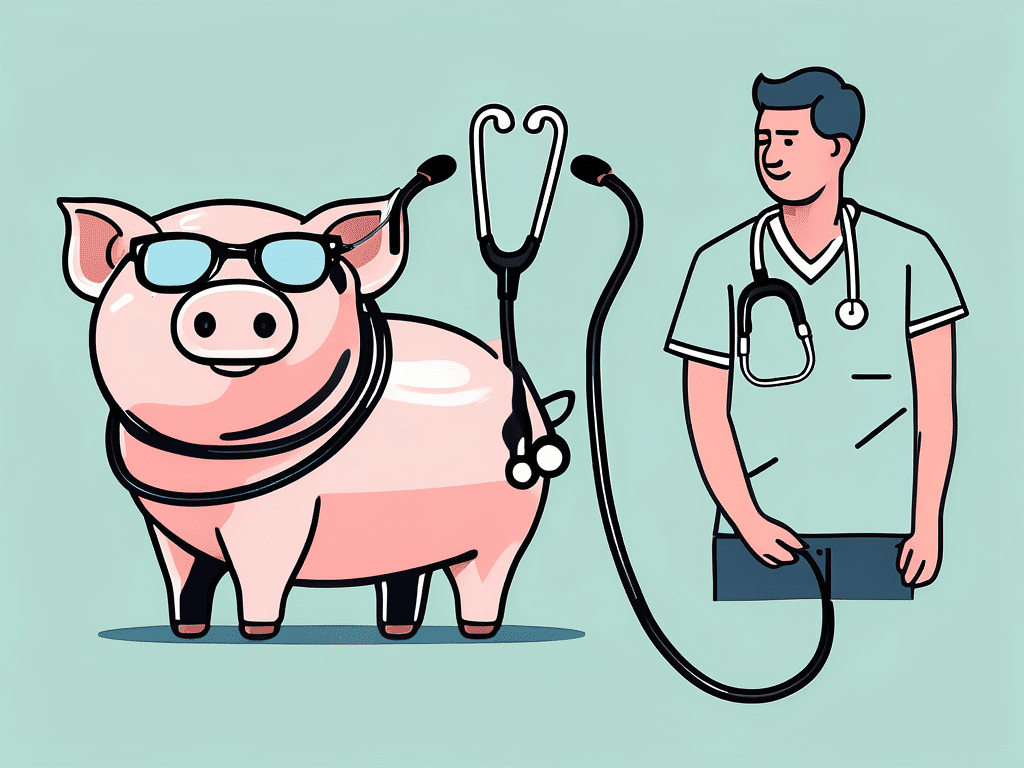Health scares are called scares for a reason. They’re commonly unexpected, and even if you have a strange feeling that something might be wrong, you never really know if or when it will come to fruition!
Creating a savings account or emergency fund for your health is a smart way to cushion the financial burden associated with such a medical situation. It means that you’ll have an amount to lean back on when things don’t go as planned, whether it’s to fund the actual care or the everyday expenses that may occur if you miss work.
Read on to dive deeper into the pros and cons of a savings account for your health, discover how to get one started and learn how ExtrasJar can help make it happen.
The pros and cons of a savings account for your health
The pros of starting a health savings account
Provides a financial safety net
You’ll be prepared to cover unforeseen medical and living costs. Whether that be for a hospital stay, chiropractor visit, emergency dental appointment or to cover the groceries and rent while you’re hobbling around, it offers peace of mind that you’ll stay in the green as you work your way back towards stellar health. Even if your savings fund doesn’t cover everything, it’ll at least lessen the blow.
No need to borrow money from friends or family or take out a personal loan
With a savings account for your health, you’ll maintain your independence by relying on your own money to stay on top of your wellbeing. Say goodbye to being in debt to friends, family or lenders and back yourself.
Allows you to plan for the future
Some medical costs, like new additions to the family, elective surgeries and post-footy-season rehabilitation can be foreseen. A nice monetary nest egg allows you to confidently approach each event with the knowledge that you can stay afloat, and you can begin planning around it.
Confidence when cash flow is inconsistent
A lot of Australians rely on a consistent cash flow to budget and approach routine expenses. It becomes complicated during a medical emergency when you might not be able to work and maintain the expected monetary support. A savings account for your health will allow you to stay financially secure during these times.
Can set it aside for specific things
Your savings account doesn’t have to be just for emergencies. If you’re an athlete, have a demanding profession both physically or mentally, have a family history of bad joints (don’t we all) or anything really, you can use it to fund routine appointments at various times in the year! Your savings, your rules.
No restrictions to spending
Many health insurance offerings don’t offer much in the way of freedom when it comes to the services, treatments and practitioners to choose. When you’re in charge, spend how you want on your health.
The disadvantages of starting a health savings account
Has little opportunity for considerable return
Unfortunately, the kinds of savings accounts that give you the freedom to take funds in and out of as necessary do not offer overly advantageous interest rates. You can expect very little gain, if any, from your health savings fund.
Requires instant access
As touched on above, instantly accessible savings accounts don’t usually offer very competitive interest rates.
Needs to be self-managed
You’re in control of your health savings account. Whether you’re investing it for long-term gains, shopping around for more competitive rates or tapping into it when necessary, you’ll need to do it all yourself and remain savvy.
Requires strong self-control
With your fund quite easily accessible and simply drawn upon, it can be difficult to practice strong self-control and not dip into your health savings. The ball’s always in your court, so you need to be smart.
How do you set up a health savings account?
Setting up a health savings account or emergency fund is quite simple:
Step one: Open a savings account that is instantly accessible and separate from your usual savings or spending account. Look for the account with the highest interest return for your benefit!
Step two: Establish an automatic transfer that steadily deposits cash week-to-week into your health savings account. Most online and mobile banking apps allow you to do this easily. Looking ahead and setting a 3, 6 or 12 month goal for your total health savings will help you figure out how much you are to deposit each time. Make sure to take into account your living expenses and potential upcoming costs too.
Step three: Tap into your account as needed, but make sure it’s for health reasons only!
Or, invest in your health with ExtrasJar
ExtrasJar is revolutionising the health extras and insurance game. We loved the idea of your own personal health savings account or emergency fund as a robust way to invest in your own health, but thought we could step it up a notch.
Just like your own account, ExtrasJar begins with a deposit into your own health. However, instead of having to shop around for the best interest rate and regularly slapping your wrists to stop yourself tapping into it, we’ll hold it securely in an account that not only rolls over every year, but expands thanks to our pioneering investment mechanism. For any medical and health support you need, confidently draw on your funds whenever you need. You’ll receive a digital Health Extras Card as soon as you open an account to make this all possible.
With ExtrasJar, you get all the pros of your own self-managed health account without the cons. We’re invested in your health just as you are, so expect no restrictions to treatments, potential for your investment to grow and greater confidence in the health of yourself and your wallet – all at once.
Find versatility, discover true control and grasp the healthiest version of yourself, inside and out, with ExtrasJar today.



